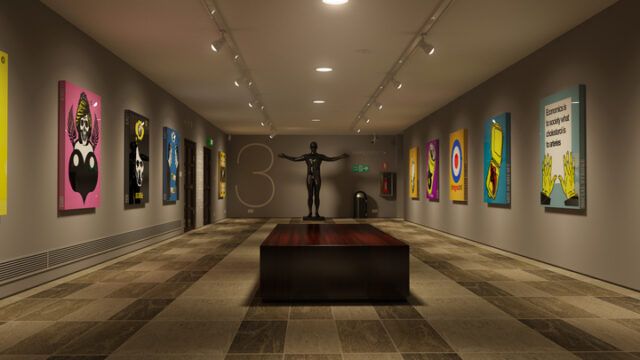High net worth individuals (HNWIs) continue to play a vital role in the art market in 2024, according to a new survey, which found a recovery in activity, but at lower average spending values.
The median expenditure on art and antiques by HNWIs surveyed for the first half of 2024 (at $25,555), if indicative of the level for the second half of the year, could reflect a stable annual level of spending, according to Clare McAndrew, author of The Art Basel and UBS Survey of Global Collecting 2024 and founder of Arts Economics.
The survey, conducted in collaboration with UBS, the global lead partner of Art Base, gathered responses from over 3,660 HNWIs in 14 markets including Brazil, France, Germany, Hong Kong, Indonesia, Italy, Japan, mainland China, Mexico, Singapore, Switzerland, Taiwan, the United Kingdom, and the United States.
Notably, there has been a strong return in spending post-lockdown in mainland China. The 300 HNWIs surveyed from reported the highest median expenditure of all respondents on art and antiques in 2023, as well as the first half of 2024 at $97,000. This figure was more than double that of any other region surveyed in the first half of the year, with Hong Kong ($28,000) in fifth place.
Adrian Zuercher, co-head global asset allocation and co-head global investment management Apac, UBS Global Wealth Management CIO, commented: “The UBS Global Wealth Report 2024 shows overall wealth has grown fastest in Apac – by nearly 177% since 2008.
“Over the next five years, the highest growth in the number of millionaires is expected in key regions across Asia, including Indonesia, Japan, South Korea and Taiwan. The strong return to spending after post-lockdown has sustained and it’s clear that HNWIs in Apac play an increasingly important role in shaping the future of the art market,” he added.
Worldwide, Gen X respondents had the highest average spending in 2023 ($578,000), and their lead continued in the first half of 2024, with levels over a third higher than millennials and double that of Gen Z and older generations.
Wealth transfers
Meanwhile, there have been further signs of generational wealth transfers, which the UBS Global Wealth Report 2024 projects will amount to $83.5trn over the next 20–25 years.
91% of HNWIs had works in their collections that were inherited or gifted through a will or other bequest, and 72% had kept at least some of them. Despite assumptions of changing tastes across generations, less than one-third of millennial and Gen Z respondents cited a lack of fit with their collections as a reason for selling or donating inherited works.
HNWIs also demonstrated a strong willingness to buy from new galleries in 2023 and 2024, with 88% of those purchasing from dealers buying from at least one new gallery.
They also allocated 52% of their expenditure to works by new and emerging artists, with 21% on mid-career, and 26% on those by established artists (the majority of which were living artists). The share of works by female artists in the HNWI collections surveyed reached a seven-year high with a ratio of 44% versus male artists’ works.
“The HNWIs we surveyed were transacting through a more diverse range of channels and price points in 2023 and 2024, engaging with more galleries than in previous years, including more new galleries,” said McAndrew.
“These changes are likely to contribute to the ongoing shift in focus away from the narrow high-end of sales that has dominated in previous years, potentially expanding the market’s base and encouraging growth in more affordable art segments which could provide greater stability in future.”
















